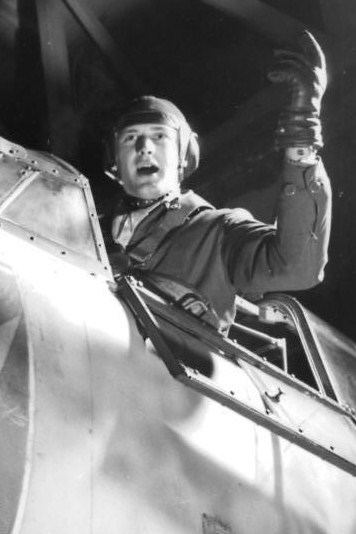Buried at cemetery Westonnen Service/branch Luftwaffe Rank Hauptmann | Allegiance Nazi Germany Years of service 1935–44 Name Heinz Struning | |
 | ||
Died 24 December 1944(1944-12-24) (aged 32)
near Bergisch-Gladbach, Germany | ||
Heinz Struning (13 January 1912 – 24 December 1944) was a German Luftwaffe fighter ace and recipient of the Knight's Cross of the Iron Cross with Oak Leaves (German: Ritterkreuz des Eisernen Kreuzes mit Eichenlaub) during World War II. The Knight's Cross of the Iron Cross and its higher grade Oak Leaves was awarded to recognise extreme battlefield bravery or successful military leadership. Struning shot down 56 aircraft in 280 missions. All of his victories were recorded at night. He was shot down and killed in action on Christmas Eve, 24 December 1944.
Contents
Career
Struning was born on 13 January 1912 in Neviges and joined the Luftwaffe in 1935. He was posted as an Unteroffizier to 5./Zerstorergeschwader 26 "Horst Wessel" (ZG 26—26th Destroyer Wing) on 2 August 1939. When World War II broke out, he flew several ground attack missions during the campaign in Poland. His Staffel was then transferred to serve with Kampfgeschwader 30 supporting German troops defending the bridgehead of Narvik in Norway.
Struning was then transferred to the Nachtjagd (night fighter force) arriving in July 1940 to 1./Nachtjagdgeschwader 2 (NJG 2—2nd Night Fighter Wing). With this unit, Feldwebel Struning made 66 intruder missions over England at night, and gained his first victory on the night of 23 November 1940. At the end of 1941 he had 9 claims in total. In November 1941, he was transferred to 7./NJG 2. With this unit, Struning gained 15 victories until mid-September 1942. He received the German Cross in Gold in July 1942, after his 19th claim. In mid September 1942 he was promoted to Leutnant and awarded the Knight's Cross of the Iron Cross (Ritterkreuz des Eisernen Kreuzes) in October 1942.
From November 1942, Struning served with NJG 2 in the Mediterranean from bases in Sicily, until April 1943. Struning is then transferred to 2./NJG 1 in May 1943. On 1 June he shot down three Royal Air Force Avro Lancasters. Promoted to Oberleutnant and appointed Staffelkapitan of 3./Nachtjagdgeschwader 1 (NJG 1—1st Night Fighter Wing), Struning coordinated the introduction of the new Heinkel He 219 "Uhu". With this aircraft, Struning downed three bombers on the night of 1 August 1943.
By April 1944, Struning had accumulated 15 night victories and on 20 July 1944, was awarded the Eichenlaub. Shortly after, he was appointed to take command of 9./NJG 1.
At about 6 pm on 24 December 1944 his Messerschmitt Bf 110 G-4 (Werknummer 740 162—factory number) G9+CT was shot down by 10-kill ace F/L R.D. Doleman and F/L D.C. Bunch of No. 157 Squadron RAF in a de Havilland Mosquito Intruder while he tried to attack a Lancaster bomber over Cologne. He bailed out but struck the tail of his plane and fell to his death. His body was found two months after his death.
During his career, Hauptmann Heinz Struning had made 280 combat missions (250 at night), and claimed 56 victories at night (including two Mosquitoes).
